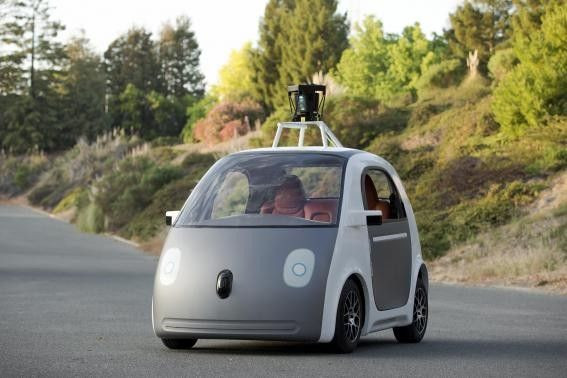Google Executive Envisions Driverless Car Within The Next 5 Years

The head of Google’s self-driving cars project, Chris Urmson says the company is making great progress with the program – which may be available within the next five years. “We’ve made some pretty exciting progress and at this point we’re pretty convinced this technology is going to come to the market,” said Chris, during a TED talk delivered in Vancouver on Tuesday.
According to NBC, Urmson has championed the program since 2009, and it has performed three million miles of testing in simulators everyday. The vehicles have driven more than three quarters of a million miles.
In his talk, Urmson, a robotocist, elucidated upon why Google is opting for a fully self-driving system rather than a driver-assisted model. The fundamental issue with the driver-assisted option, he says, are the drivers – whom he called the least reliable part of the car. "Some 1.2 million people are killed on the roads around the world each year. That number is equivalent to a jet falling out of the sky every day," He said. "That is not to say that driver-assistance cars won't be useful but if we are really going to make changes to our cities, get rid of parking lots, we need self-drive cars."
Urmson narrated the case of a test drive using Google employees in 2013. One driver who was supposed to be paying attention during the experiment with the driver-assisted car. However, the volunteer noticed that his phone battery was running low, and turned his attention to the back seat where he dug around to find his laptop and a charger – while the car was going down a freeway at 65 miles per hour.
“The better the technology gets, the less reliable the driver’s going to get,” says Urmson. This is where Google's driverless car model distinguishes itself from the driver model, as it also possesses the ability to drive and navigate through unpredictable driver conditions. construction. Some of the unique circumstances they encountered during training, include a car making a U-turn, a cyclist running a red light, even a woman in an electric wheelchair chasing a duck in circles on the road.
As the The Globe and Mail lets us know in it's report, Another factor which plays into the hands of the driverless model is the time Urmson says we waste at the wheel. With traffic getting worse, commute times are increasing. About six billion minutes are spent commuting every day, he said. “You take that six billion minutes and you divide it by the average life expectancy of the person, that turns out to be 162 lifetimes spent every day wasted just getting from A to B.”
As for when the self-driving cars might be available, states that Urmson said he has an 11-and-a-half-year-old son who will be eligible for a driver’s license in four and a half years. "My team and I are committed to making sure that doesn’t happen.”





















